#medical wounds
Explore tagged Tumblr posts
Text
Mac deals with the aftermath of Desi being charged with domestic terrorism
Or should I say Jack deals with it
I love this couple, why do i like seeing them suffer? Got me....
#macgyver#jack dalton#angus macgyver#emotional whump#macgyver whump#blood and torn stitches#medical wounds#abandoment issues#I mean serious abandonment issues#Desi and Mac#Mac and Desi#for my mac and Desi peeps#whump#being restrained#medical restraints
2 notes
·
View notes
Text




maybe never forgive. but things are different now. so we'll use maybe.
#my version of a happy ending au#mouthwashing#captain curly#mouthwashing anya#anya#curly#my art#considering this game takes place in a hellscape#i imagine one of the other horrifying angles for anya was that she might not even have the rights to abort the wound#so i like to think. curly. thinking he's going to die anyway. just takes all of the medical bills from his crew#because if he lives then he'll spend his life paying it all off#and if he dies. then he takes the burden with him#but him and anya are horrible horrible parallels now. and they cant NOT care about each other#he'll turn himself into the horse. he'll be the beast of burden. anything he said. anything#and for once he actually means it.
25K notes
·
View notes
Text
I'm trying to write a fic and I'm hung up on a detail
If you were bitten by a person, which would you go for to disinfect the wound? Not with much research, not with intense recalling of medical knowledge. Imagine someone just bit the fuck out of you, you're understandably stressed and freaked out, and you ran to the medicine cabinet to clean it.
for the "other" option, I know this is the shitpost website, so I don't mind if you put a joke in the tags, but I still would like your serious answer 👀
#poll#hypothetical medical poll#wound treatment#my polls#I'm not tagging which fandom the fic is in bc it's only a few paragraphs done and I am notorious for losing motivation#i don't want to disappoint anyone
2K notes
·
View notes
Text
Wound Care For Adults
So the wife was on backpacking reddit and found that a lot of people can't tell the difference between wounds you need some vaseline and a bandaid for, wounds that need a little home TLC, wounds you need to go to an urgent care for, and wounds you actually need to go to the emergency department for, so we're gonna talk about that here.
Wounds that need some vaseline and a bandaid:
A blister that popped
A non-gaping cut
A skinned knee (small amount of fresh, shallow road rash with nothing embedded)
Keep in mind that you should NOT use rubbing alcohol, iodine, mercurochrome, or hydrogen peroxide on any of these. It will just hurt and potentially kill healthy cells in the wound. Neosporin or other antibiotic ointment is okay if you happen to have it, but the antibiotics themselves don't last long and are generally not worth the extra money.
Wash the wound with plain tap water, pat it dry with a clean cloth or piece of gauze, dab on a little petroleum jelly (Vaseline) and slap a bandage on that beby.
Wounds that need some TLC at home:
A small, shallow burn with nothing stuck to it
A slightly infected open blister or non-gaping cut
Slightly infected road rash or shallow road rash with something embedded in it
Cut gaping less than 1/4 inch (1/2 cm)
Small, shallow burn: Right after you get the burn, run it under cool tap water for 5-10 minutes, even if you think it's already cool. This will help clean the wound and stop the burn from getting any deeper. Do not ice. Do not put oil or butter or vaseline on the wound. Use an over the counter burn gel and a bandaid to hold it in place.
Slightly infected small wound/road rash: You'll know it's slightly infected if there's redness and swelling around the edges (up to 2cm), if there is drainage, and if it smells bad. It will also probably hurt more than you think it should. For this you'll want to do hot compresses about 4 times a day for 20 minutes per time until the infection goes away. To do this, get a pot and get water hot enough that it is uncomfortable to touch. Then put a wash cloth in that water, pull it out, wring it out, and hold it against the wound. It should be uncomfortably hot and just a little painful. When it cools down, dip it back in the pot, wring it out, and do it again. At the end of 20 minutes the whole area around the wound should be pink.
Road rash with something embedded: If there's a tiny stone or pieces of visible dirt on this section of road rash, you'll need to clean it with a moderately forceful stream of water. You can do this with an irrigation syringe you can get from the pharmacy, or you can make your own using a plastic zipper bag. Fill a bag with water, then cut a teeny tiny hole in one of the corners. Squeeze the bag to make a stream of water, then direct that stream at the wound. This will take potentially a lot of water. Keep at it until there is nothing visible in the wound, then treat with vaseline and a bandaid.
A cut gaping less than 1/4 inch: If this is on your face, genitals, or hands and you care about scarring, go to an emergency department. If this is on another part of your body and you're okay with a scar, keep reading. Stop bleeding with pressure. Clean the wound by running clean tap water through it and pat the edges dry. Make some butterfly bandages out of strong tape- I recommend silk medical tape, but in a pinch you could use duct tape or similar.

Starting on one end, tape down one side of a butterfly bandage, pull it across the cut, and tape it to the other side. Move a 1/4 inch down the cut, and tape another one down, then another, until you have taped the length of the cut. Put some kind of breathable bandage on top of this.
Wounds that need to go to an urgent care:
Cut gaping more than 1/4 inch but that you can still stop bleeding with pressure.
Open blister, cut, burn, or road rash that is draining thick, yellow-or-white drainage and is not getting better with hot compresses, but you don't have a fever
Stop any bleeding, clean by running water over the injury, and go to an urgent care or your family doctor if you happen to be able to get in for a same-day appointment.
Wounds that need to go to an emergency department:
Any cut that gapes on the face, palm of the hand, or genitals
Infection with streaks or with which you have a fever/chills, or for which the red area grows by more than a cm in an hour
Burn larger than the palm of your hand or that is more than skin deep
Any wound that was spurting blood or that needed a tourniquet to stop bleeding
Go to the emergency department as soon as possible, they'll take care of it.
948 notes
·
View notes
Text
I’ve read so many stories from WWI about how wounded soldiers who couldn’t be taken to a hospital and got infected with maggots had a higher survival rate and healed up nicer than a lot of soldiers who were cared for by doctors because the maggots were far better at removing dead/rotten tissue and leaving healthy tissue intact that if I was far from medical care and ended up with maggots in my wound I’d kick anyone away who tried to remove them “No! Let them work!” Fuck, if I was offered to be treated with the modern maggots bred specifically for wound treatment at a hospital I’d be kinda excited. And if someone else got a maggoty wound far from civilization and freaked out I’d try my damn hardest to convince them to please leave them in.
But try having a normal conversation with someone at a dinner party about that.
2K notes
·
View notes
Text






#girlblogging#axe#hospitalized patients#patients#patientsafety#patientcare#injures#operation#medicine#hospitalcore#hospital#nurse#first aid#emperatrizdelmal#weird girl#i need a lobotomy#mental health#mental illness#mental hospital#psiquiatria#emotional wounds#reopening wounds#open wounds#surgery#heart surgery#medical instruments#surgical instruments#surgical#Romain Slocombe#vintage medical
500 notes
·
View notes
Text
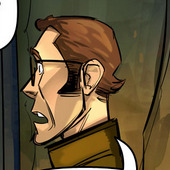

favourite comic detail is the implication that medic cut sniper's fuck ass haircut in the middle of that 12 hr surgery

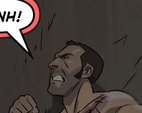
the lil bit on his neck is gone thats how you can tell. medic fucking buzzed his goofy mullet. you dont cut a patients hair unless you're performing surgery in that region. all his stitches are abdominal.
2K notes
·
View notes
Text
ear’s guide to writing stab wounds
disclaimer!!!: this isn’t to be used as actual medical advice there isn’t enough information at hand to properly treat someone, this is just for writing.
hemostatic (blood clotting) control is the number one priority. minor bleeding can be controlled with direct pressure to the wound. moderate bleeding may require a compression bandage as well as direct pressure. severe penetrating wounds or a nicked artery means wound packing will be necessary as well as direct pressure.
types of stab wounds:
- blunt stab wound means whatever object caused the trauma wasn’t sharp or wasn’t moving fast enough so the skin tears.
- penetrating stab wounds go deep into the skin and into the muscle.
- superficial stab wounds don’t go too far under the skin and look worse than they actually are.
steps to treatment:
1. if the object is still inside the person’s body do not remove it unless it’s to the groin, neck, or axillae (armpit) and the bleeding is hard to control.
2. remove person’s clothes to check for any other wounds and keep the area clear.
3. keep an eye on blood pressure and airway.
4. the wound type and location changes how the rest of treatment will follow.
location:
head: direct pressure is mainstay. head wounds also bleed more than any other part of the body. has the highest mortality rate.
face: severe wounds to the face means the patient has to be seated forward to keep blood out of the airway.
neck: direct pressure is mainstay. if the airway can be secured and is absolutely necessary, wound packing can be applied.
arms: depending on the severity, any of the three treatments can be used.
legs: depending on the severity, any of the three treatments can be used.
abdomen: damage to organs is highly likely. direct pressure should be applied first while surveying if the object was long enough to damage an organ. if so, wound packing may be necessary.
chest: if the wound is deep enough it can cause open pneumothorax (‘sucking’ chest wound) a seal needs to be placed over the wound to keep air from getting inside. if this isn’t done in time the affected lung will collapse.
back: can typically be treated with only direct pressure. wound packing is rarely necessary.
neck, chest, abdomen, and pelvis wounds should never be packed unless absolutely necessary.
treatment types:
direct pressure: key to any wound. can be done with whatever is available even if that means the medic needs to use their own body weight.
tourniquets: applied to the limbs. typically not applied for more than thirty minutes. in some cases, they can be left on for hours, keeping the phrase “life over limb” in mind. complications with tourniquets like nerve damage or ischemia (no blood circulation) are rare. don’t apply over a joint and apply above the wound.
wound packing: done with standard gauze and or hemostatic dressing
wound packing steps:
1. control the bleeding with pressure. use anything available even if it means t shirts or a knee.
2. place a gloved finger inside the wound too apply initial pressure. this will hurt like a bitch. also gives you an idea of what direction the blood is coming from so gauze can be used more accurately.
3. begin packing the wound with gauze. keep pressure on the wound with finger while wrapping gauze around another finger and pushing it in the wound.
4. keep packing the wound until no more gauze can fit in, and then keep direct pressure on for at least three minutes.
5. after the three minutes, use something like a bandage wrap to keep the gauze secure inside the wound.
6. splinting the area to keep it immobilized may be vital to keep the hemorrhage from restarting
7. if bleeding continues medic has to decide if they need to take out gauze and reapply with new gauze or apply more direct pressure. this is usually done by how long it takes to get to further treatment. the longer the wait the more of an incentive it becomes to repack the wound. if it’s just down the road then apply pressure.
most likely complications:
hypoxia, shock, and hypothermia are complications that need to be watched for and treated immediately if they occur.
hypoxia:
occurs when a region of the body doesn’t have enough oxygen in the tissue. can lead to organ damage, brain and heart damage being the most dangerous.
symptoms include: tachycardia (rapid heart rate), difficulty breathing, confusion, shortness of breath, anxiety, headache, and restlessness.
severe symptoms include: bradycardia (slow heart rate), extreme restlessness, and cyanosis (blue or purple tint to skin).
treatment: oxygen
shock:
life threatening condition where the body doesn’t have enough blood volume to circulate through itself. if it goes on for long enough, organ damage and death may occur.
symptoms: rapid, slow, or absent pulse, heart palpitations, rapid shallow breathing, lightheadedness, cold clammy skin, dilated pupils, chest pain, nausea, unfocused eyes, confusion, anxiety, and loss of consciousness.
treatment: if they’re not breathing, cpr is required. if they are breathing, lay on back and raise feet a foot off the ground to keep blood in the vital organs.
blood transfusion and fluids once in a hospital setting.
hypothermia: occurs when the body is losing heat quicker than it can produce. the more blood that’s lost the more likely hypothermia is to occur.
symptoms: differ based on severity
hypothermia:
in mild hypothermia: shivering, exhaustion, clumsiness, sleepiness, weak pulse, tachycardia (rapid heart rate), tachypnea (rapid breathing), pale skin, confusion, and trouble speaking.
in moderate hypothermia: bradycardia (slow heart rate), bradypnea (slow breathing), slurred speech, decline in mental function, shivering slows down, hallucinations, cyanosis (blue or purple tint to skin), muscle stiffness, dilated pupils, irregular heart rate, hypotension (decreased blood pressure), and loss of consciousness.
in severe hypothermia: shivering stops, hypotension (low blood pressure), absence of reflexes, compete muscle stiffness, fluid builds up in lungs, loss of voluntary motion, cardiac arrest (heart stops beating), coma, and death.
treatment: covering with a blanket, hat, and jacket, adding external heat like a hot pack, and if severe and in a hospital setting, warm fluids via iv, warm oxygen, and or a machine to warm the blood in the body.
if you have any questions feel free to ask! i plan on making a guide to gunshot wounds and a more in depth guide to hypothermia later.
#tips for writers#writing advice#helping writers#writing resources#resources for writers#writing tips#writing help#creative writing#trauma writing guide#medical writing tips#writing guide#medical writing guide#stab wound#call of duty#cod#call of duty modern warfare#ear’s guide to writing
948 notes
·
View notes
Text
Peach: Mario, is everything alright?
Mario: (snaps back to reality) Huh?! Oh! Yes Princess. Sorry about that. I zoned out. Ima okie dokie.
Peach: You’ve been quiet lately… well more than usual.
Mario: … I’ma my usual self princess. (Forced smile)
Peach: Mario, please don’t lie to me.
Mario: (sighs) Okay… but you have to promise not to tell anyone.
Peach: (nod)
(Mario unbuttons his overalls and removes his shirt. It reveals a massive burn on his chest)
Peach: (initially blushing but turns to concern) Oh Dear! Mario.
Mario: It’s not’a bad as it looks. It’s more… too close for comfort. It’s been hard keeping it from Luigi. I don’t want him to freak out.
(Peach puts her hand on his chest. Starts pumping magic into him. The burn starts vanishing)
Mario: Mamma Mia! That’s incredible.
Peach: (noticing the scars underneath). Mario, from now on. I will be addressing your wounds. You are to come to me after your adventures understood?
Mario: (surprised and blushing) Princess you don’ta need to do…
Peach: This is non-negotiable. And you will address me as Peach.
Mario: (super red) Yes’a Pri… Peach.
Peach: Good.
#mareach#super Mario#peach has healing powers#she also has magic#so she should be able to heal#I headcannon Mario usually self medicates#he treats his own wounds with knowledge#he studied to be a doctor#Mario#princess peach#peach#but yea usually what he can find around the house
164 notes
·
View notes
Text
tw medical interference, anatomy

due to the complete lack of information in the canon, I embarked on an exuberant imaginary research. The game has wires showing his health level, in the last round he promises to turn off the defibrillator not only to the player but also to himself in order to "dance on the verge of life and death" And I..... Came up with a lot of details....... Yes, women (I) love tragedy, difficult characters, medical aesthetics and biopunk. Here I have sketches of what the Dealer does after the end of the game- he rests, picks out bullets and stitches wounds, levels his health and prepares for a new Russian roulette.
#art#digital art#artists on tumblr#horror#buckshot roulette#the dealer#buckshot roulette dealer#my art#illustration#creepy art#tw medication#tw anatomy#tw wounds
422 notes
·
View notes
Text
Whumpee hasn’t realized they’ve been rescued. They fight the hands trying to stop the bleeding, wich resulted in them also having to hold them down.
Then there’s a voice. A familiar voice that could never be mistaken. Caretaker speaks just loud enough over the shouts saying “Eyes on me, nothing else matters, don’t look at them. Eyes on me.”
They would never see the blood; or how gruesome and horrific their wound actually was. They never saw the faces of the strangers who had no other goal other than keeping them alive.
They only saw caretaker.
#whump#whumpee#caretaker#caretaking#whump prompt#caretaking prompt#rescue whump#recovery whump#injury prompt#wounded whumpee#whump scenario#whump writing#whump drabble#whump angst#critical whumpee#injury whump#medical whump#tw medical#affirmation whump
1K notes
·
View notes
Text

Canadian medics from the 3rd Infantry Division assist a wounded comrade - Caen, France, July 1944
#world war two#ww2#worldwar2photos#history#1940s#ww2 history#wwii#world war 2#wwii era#ww2history#canadian army#canadian#medic#1944#wounded#Caen#France
93 notes
·
View notes
Text
Latino Mysterion is so funny to me because I can totally hear him say some shit like: “I may not have medical insurance, but I do have sana sana colita de rana,” in his deep nasally voice while he’s on the verge of dying.
#“I’ll be good with some vaporub. trust!#kyle is like: caldo de pollo is NOT gonna heal this gunshot wound!#south park#kenny mccormick#Mysterion#sp mysterion#sp Kenny#headcanon#based on my own experiences#Got shot? just thug it out#ambulance transportation be expensive asf#aint no way im paying a medical bill#in this economy?
135 notes
·
View notes
Text
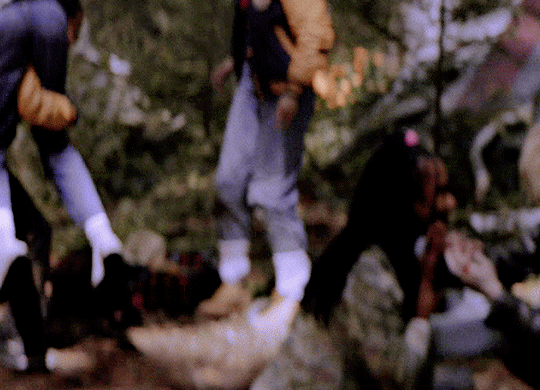

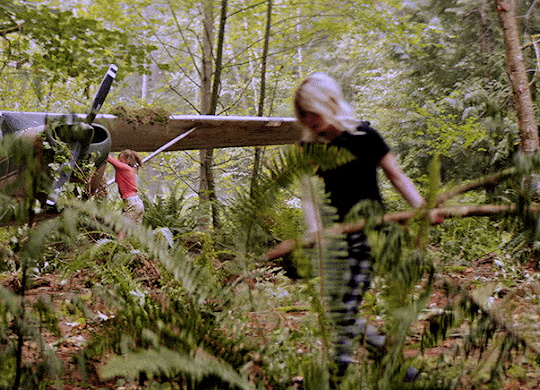


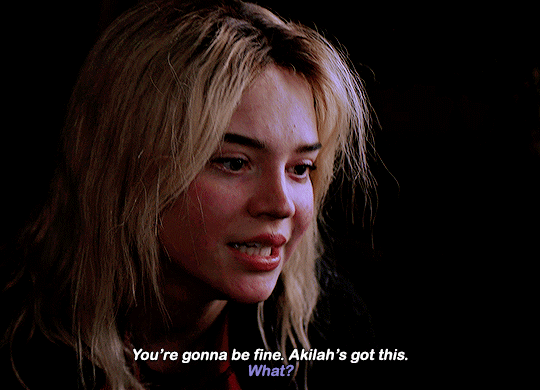

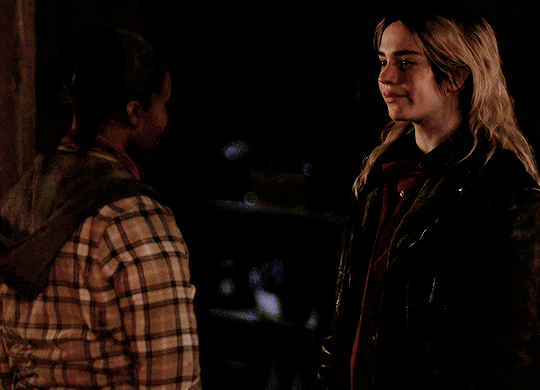
NAT & AKILAH Yellowjackets ◆ Seasons 1-2
#nat scatorccio#natalie scatorccio#akilah yellowjackets#nat x akilah#yellowjackets#yellowjacketsedit#usercoty#yjedit#tvedit#96yellowjackets#yellowjacketssource#*#horrorwomensource#femalecharacters#akilah and nat tending to each others wounds from the beginning and then nat being right there beside her through both medical emergencies#akilah literally falling into her after the plane explosion#the way they are the Only 2 who thought to save javi. they deserved to talk about it :(#i think about them A Lot
856 notes
·
View notes
Text

I just think he's pretty
#I am an old man Silco enjoyer too btw don't come for me#Vander attacking him gets a bit sadder to me thinking about Silco having to self medicate his wound before meeting Singed#a nerve eating infection has to HURT#that one flashback made it look like his mascara was running so my silly little headcanon is that he would wear mascara sometimes#and after the Incident he tried to keep wearing it but it would constantly be running from the pain so he had to stop wearing it#and it further solidified the idea that he couldn't go back to being that same person he was ever again#Arcane#Silco#Young Silco#JuanitaScribbles
117 notes
·
View notes
Text
idly mentally writing a NariLamb angst fic, just to be silly, all the while I longue in bed waiting for death sleep
-> right after Lamb betrays Narinder <-
Brain: "He had once towered over him, but now here he lay. Curled up in a tiny ball in his lonely hut, trembling. Heat that only comes from severe infection rolled off of his body. His fur matted, smelling of sickness, blood, and decay, the air turned foul. Because Lamb had been petty, because they hadn't cared, he was dying alone*."
Me:

*that is something I think about a lot when Big Sad
#genuinely almost triggered my depression right then and there#fuck you brain#it's obvious my antidepressants have worn off oafsji;d#cult of the lamb#cotl#the lamb cotl#cotl narinder#cotl narilamb#angst#context: lamb so angy @ Nari after they defeat him they send him to his hut without realizing he's covered in wounds from his chains#like I'm talking about his legs and torso and neck#he's got open sores#and he's too scared and traumatized to seek medical help
52 notes
·
View notes